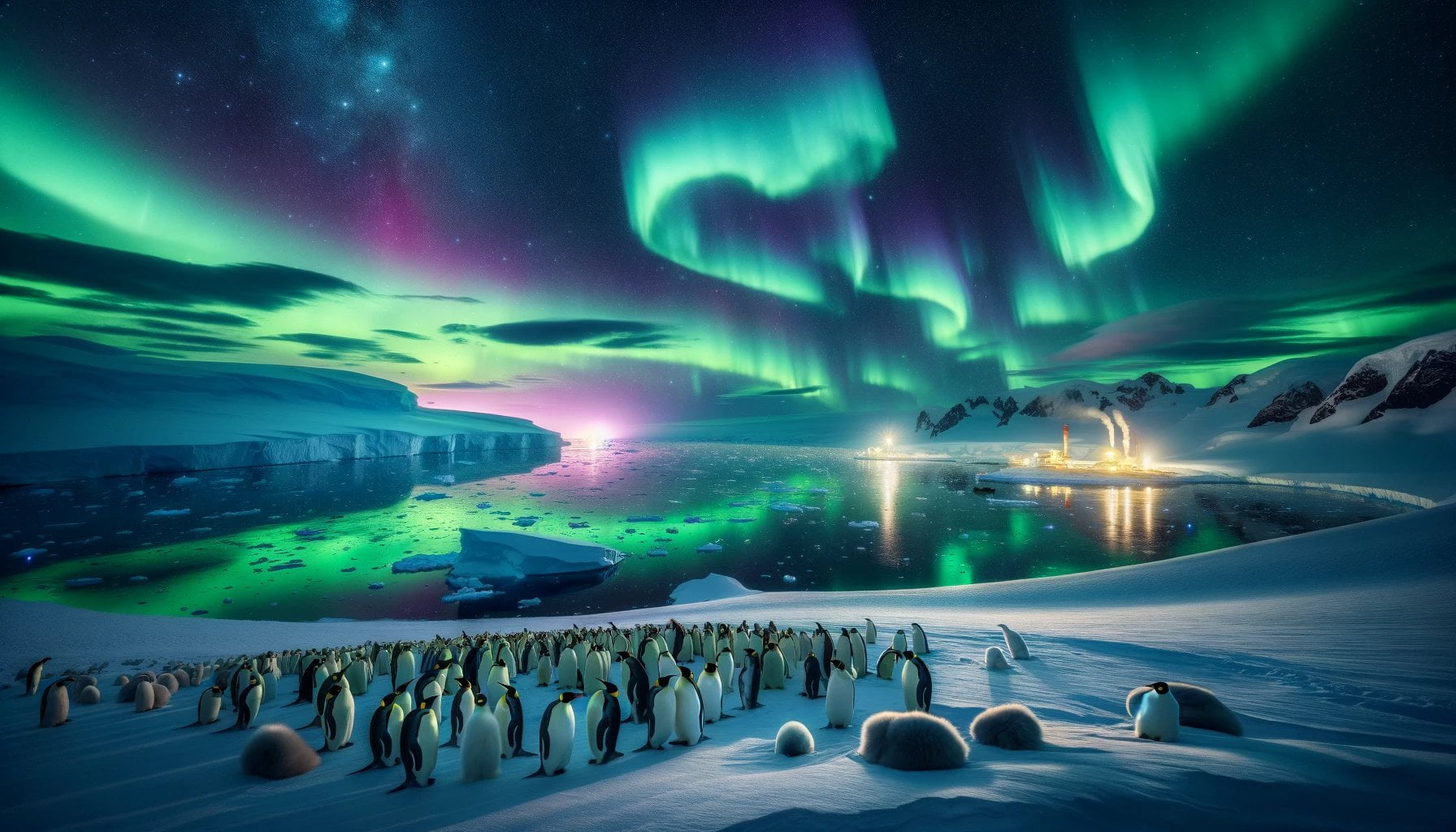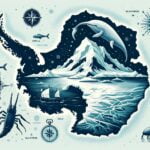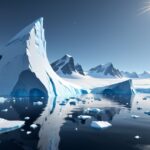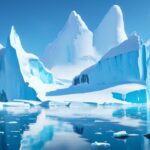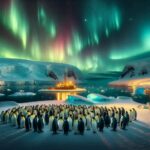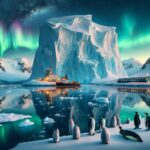Fascinating Facts about Antarctica: Uncover the Enigma of the Continent
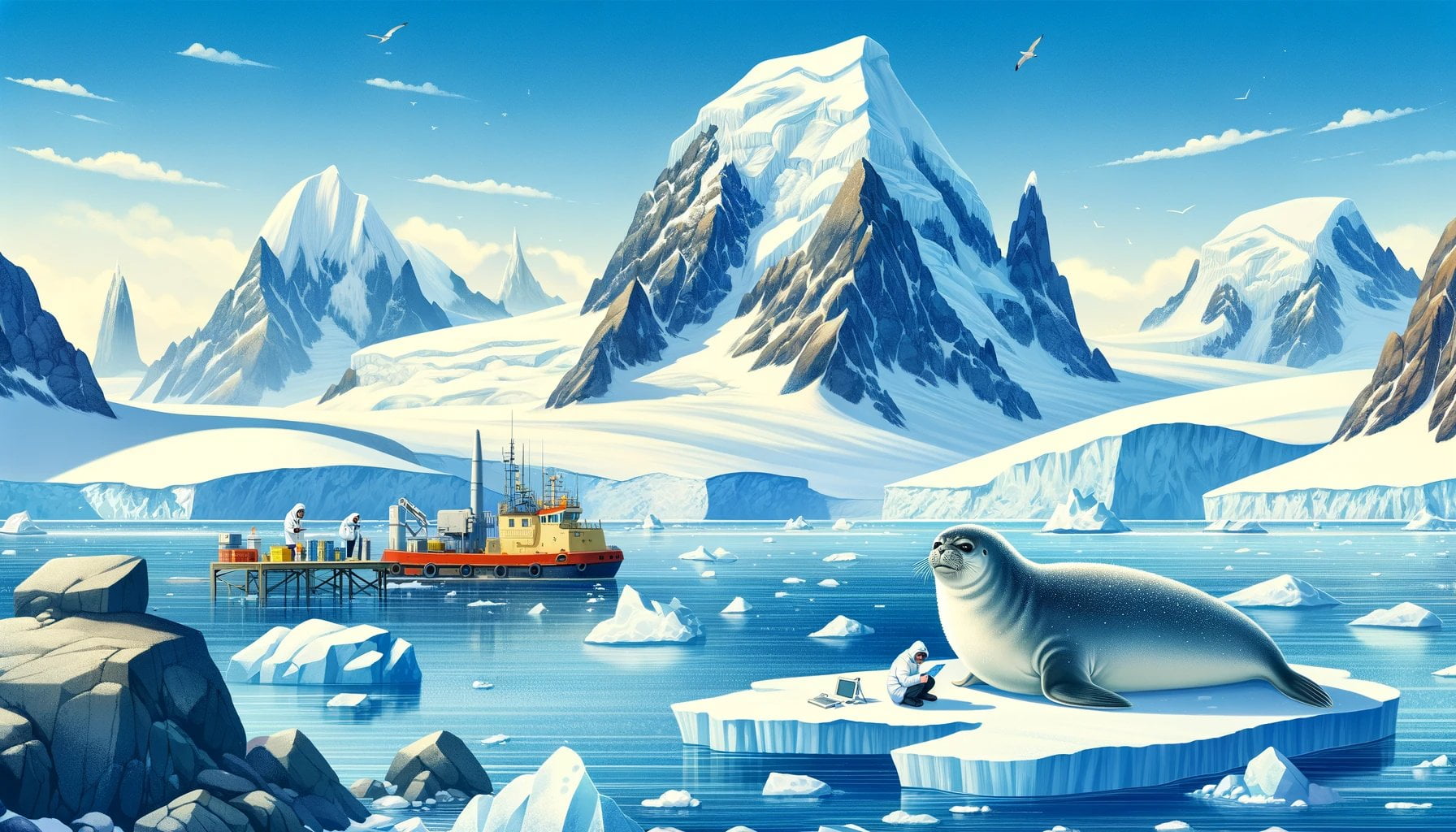
Discover the awe-inspiring world of Antarctica, a continent shrouded in mystery and wonder. In this article, we will delve deep into the intriguing realms of climate and science, uncover captivating geographical features, and unravel the secrets of the remarkable animals that inhabit this remote land. From the breathtaking landscapes shaped by extreme cold and ice to the adorable penguins waddling across the frozen terrain, prepare to embark on an extraordinary journey to the heart of one of the most enigmatic places on Earth.
Key Takeaways:
- Antarctica is the fifth largest continent and is often referred to as “The Frozen Continent.”
- It is the coldest, driest, and windiest continent on Earth.
- Antarctica does not have a native human population and there are no countries in Antarctica.
- Prior to the Antarctic Treaty of 1959, seven countries made defined claims to Antarctic territory.
- The Dry Valleys in Antarctica are the driest place on Earth with minimal snow or ice cover.
- Antarctica experiences strong winds of up to 200 mph and receives minimal snowfall.
- The Antarctic ice sheet is the largest ice store on Earth, covering 14 million square kilometers.
- Antarctica has no permanent residents but is home to scientists and tourists.
- Some interesting facts about Antarctica include its extreme conditions, such as being the windiest place on Earth and having the lowest recorded temperature of -89.2°C.
- Antarctica used to have a different climate in the past, with forests and dinosaurs, but it became frozen due to plate tectonics and changing ocean currents.
Facts About Antarctica: Uncover the Enigma of the Continent
Antarctica: The Frozen Enigma
Antarctica, the southernmost continent on Earth, has captivated the imagination of adventurers and scientists for centuries. Known as “The Frozen Continent,” Antarctica is a land of extremes and mysteries waiting to be uncovered. Let’s delve into some fascinating facts about this enigmatic continent.
1. A Continent Like No Other
Antarctica is the fifth largest continent, boasting a total area larger than Europe or Australia[^1^]. However, it stands out for more than just its size. It is the coldest, driest, and windiest continent on our planet[^2^]. Its immense ice sheet stores a whopping 90% of the world’s ice, making it the largest ice store on Earth[^3^]. Antarctica’s extreme climate and unique features set it apart as an enigmatic wonderland.
2. A Desert Wonderland
While you may associate deserts with scorching heat and shifting sands, Antarctica is a desert of a different kind. With its incredibly low precipitation, Antarctica receives only about 2 inches of snow each year[^2^]. This makes it one of the driest places on Earth. Surprisingly, the snow in Antarctica is old and never melts, creating a breathtaking landscape of gleaming ice[^2^]. It’s a desert frozen in time.
3. A Continent Without Borders
Antarctica presents a unique geopolitical scenario. Unlike other continents, it has no native human population and no countries claim ownership over it[^2^]. Prior to the Antarctic Treaty of 1959, seven countries had made defined territorial claims on Antarctica, but now the continent is dedicated to peaceful scientific research and international cooperation[^2^]. It is a land that belongs to all humankind.
4. A Symphony of Wind and Cold
If you think you’ve experienced strong winds, Antarctica is on a whole different level. With gusts reaching over 200 mph (320 km/h), Antarctica is the windiest place on Earth[^6^]. These powerful winds sculpt the landscape, shaping towering icebergs and rugged rocky formations. Combine these fierce winds with the biting cold, and you have a recipe for an awe-inspiring, yet harsh environment.
5. Ancient Secrets of the Dry Valleys
Journey to the Dry Valleys of Antarctica, and you’ll find a remarkable spectacle. These valleys are the driest places on Earth, with minimal snow or ice cover[^2^]. They resemble the characteristic landscapes of Mars, with their barren expanses and rocky terrain. These valleys, devoid of liquid water, offer an otherworldly glimpse into the extreme conditions that shape our planet.
6. A Frozen Time Capsule
Beyond its striking landscapes, Antarctica holds clues to Earth’s distant past. Plate tectonics and changing ocean currents led to Antarctica’s deep freeze, imprisoning the remains of ancient forests and dinosaurs[^6^]. Scientists have uncovered fossils that provide a glimpse into a time when Antarctica was a lush, vibrant land. It is a frozen time capsule that holds the key to unraveling Earth’s geological history.
7. A Haven for Science and Exploration
While lacking a permanent human population, Antarctica is far from deserted. Scientists from around the world flock to its research stations to study its unique ecosystems and the effects of climate change[^5^]. These dedicated researchers brave the harsh conditions, enduring frigid temperatures and isolation to expand our understanding of our planet and its future. Antarctica serves as a beacon of scientific discovery and global collaboration.
8. A Land of Extremes
Antarctica is the epitome of extremes. It boasts the lowest recorded temperature on Earth, a bone-chilling -89.2°C[^6^]. This icy wilderness pushes the boundaries of what life can endure. Yet even in these harsh conditions, Antarctica teems with life. Penguins, seals, whales, and various bird species call its icy waters and rocky shores home. It is a delicate balance of survival and adaptation against all odds.
Unveiling the Enigmatic Continent
Antarctica remains a magnetic destination, drawing explorers and scientists to unravel its enigmas. It is a continent of undeniable intrigue, offering a glimpse into Earth’s past and a stark warning for its future. Through its fascinating facts and natural wonders, Antarctica urges us to preserve and protect our fragile planet.
Table:
| Antarctica | |
|---|---|
| Area | Fifth largest continent |
| Climate | Coldest, driest, and windiest continent |
| Residents | No permanent human population, home to scientists and tourists |
| Territorial Claims | None, dedicated to peaceful scientific research |
| Dry Valleys | Driest place on Earth with minimal snow or ice cover |
| Ice Sheet | Largest ice store on Earth, covering 14 million square kilometers |
| Wind | The windiest place on Earth, reaching gusts of over 200 mph |
| Temperature | Lowest recorded temperature of -89.2°C |
| Ecology | Supports diverse wildlife, including penguins, seals, and whales |
Note: The table provides a concise summary of key facts about Antarctica.
Antarctica is full of fascinating secrets, but did you know that there is a hidden fact about this icy continent? Discover the mystery of Antarctica’s secret fact and prepare to be amazed! What is Antarctica’s secret fact?
Looking for some mind-blowing facts about Antarctica? Check out this article to uncover 20 incredible facts that will leave you in awe! What are 20 facts about Antarctica?
Curious to learn more about Antarctica? Dive into this article to find out three interesting facts about the icy wonderland that will surprise you! What are 3 interesting facts about Antarctica?
Prepare to be amazed by the wonders of Antarctica! Discover five intriguing facts about this icy continent that will captivate your imagination. What are 5 interesting facts about Antarctica?
Facts About Antarctica Penguins
Key Takeaways:
– Penguins are flightless seabirds that thrive in Antarctica, seamlessly transitioning between land and sea.
– They possess remarkable swimming abilities, allowing them to navigate through the icy waters with precision and agility.
– Penguins have a varied diet, feasting on fish, krill, and other marine creatures in their ecosystem.
– Breeding occurs in large colonies, where penguins gather to lay eggs and care for their young.
– Penguins possess a unique adaptation that enables them to drink salty water to maintain their hydration levels.
– Deep diving is an exceptional skill of penguins, enabling them to search for food at great depths.
– The cold Antarctic environment does not freeze penguin feet, thanks to their physiological adaptations.
– In the ocean, a group of penguins is referred to as a “raft,” while on land, they are called a “waddle.”
– Most Antarctic penguin species opt for “tobogganing” by sliding headfirst on their stomachs, a faster alternative to waddling.
– The three main penguin species found in Antarctica are Adéle, Gentoo, and Chinstrap penguins.
– Penguins exhibit a wide range of sizes, with weights ranging from 22 to 45 kilograms and heights up to 122 cm.
– The Emperor Penguin, the largest species, shares similar sizes between males and females.
– Distinctive coloring is observed among penguins, with Emperor Penguins sporting black heads and dorsal sides.
– Penguins can live up to 20 years in the wild, while some individuals may even reach the age of 50.
– Emperor Penguins engage in winter breeding, gathering in massive colonies to huddle together for warmth.
Penguins, the captivating flightless seabirds of Antarctica, charm both scientists and nature enthusiasts alike. These incredibly adaptable creatures effortlessly navigate between land and sea, showcasing their prowess in both environments. Here are some fascinating facts about Antarctica penguins that will shed light on their remarkable behaviors and adaptations.
Swimming Wonders
Penguins are renowned for their exceptional swimming skills. They possess streamlined bodies and powerful flippers that enable them to glide gracefully through the frigid Antarctic waters[^2^]. Whether they are chasing prey or evading predators, penguins are expert swimmers, propelling themselves with precision and agility.
An Eclectic Diet
When it comes to food, penguins are not picky eaters. They have an open diet, primarily feeding on fish, krill, and other marine creatures that thrive in the Antarctic ecosystem[^1^]. The abundance of food in their habitat allows penguins to adapt their diets based on availability. This flexibility ensures their survival even in challenging environmental conditions.
Breeding in Unity
In the vast expanse of Antarctica, penguins gather in large colonies for breeding purposes. These colonies provide safety and support for the intricate process of raising their offspring[^1^]. Penguins lay eggs, which are incubated by both parents until they hatch. The colonies buzz with activity as penguins take turns caring for the young, a remarkable display of cooperative parenting.
Diving Deep
To procure sustenance, penguins must go beyond the surface. Their unique adaptation allows for deep dives in search of food[^1^]. Remarkably, they can descend to great depths, skillfully maneuvering through the icy waters to catch their prey. This exceptional diving ability sets penguins apart and serves as a testament to their evolutionary success.
Surviving the Cold
Penguins thrive in the world’s harshest environments, including the freezing temperatures of Antarctica. Their bodies are well-equipped to handle the cold, with physiological adaptations that prevent their feet from freezing on the ice[^1^]. These remarkable adaptations allow penguins to navigate their icy habitats without discomfort or hindrance.
Gatherings and Tobogganing
Nature offers us many wonders, and observing penguins is no exception. Whether in water or on land, a group of penguins carries unique names. In the ocean, they form a “raft,” gliding together in harmony. On land, however, they create a charming “waddle,” marching with distinctive determination[^1^].
Moreover, it’s fascinating to note that many Antarctic penguin species opt for a fun and efficient mode of transportation called “tobogganing.” By sliding down slippery and icy slopes on their tummies, headfirst, they can navigate their surroundings much faster than traditional waddling[^1^]. This unique behavior showcases their resilience and resourcefulness in adapting to their environment.
Antarctica’s Penguin Variety
Antarctica is a penguin paradise, housing several unique and captivating species. Adéle, Gentoo, and Chinstrap penguins reign supreme in this icy landscape[^9^]. While they share similar characteristics and behaviors, each species possesses its own distinct features and adaptations that allow them to thrive in the Antarctic ecosystem.
Size Matters
When it comes to size, penguins exhibit a range of proportions. Weight and height can vary significantly. The lighter end of the spectrum sees weights around 22 kilograms, while the heavier individuals may tip the scales at 45 kilograms. Standing tall, penguins reach heights up to 122 centimeters, offering a captivating sight in their natural habitat[^9^].
Emperor Penguins: Pinnacle of Adaptation
One cannot explore Antarctica’s penguins without mentioning the majestic Emperor Penguin. This iconic species stands out due to its impressive size and unique appearance. Both males and females reach similar dimensions, and their coloring adds to their allure[^10^]. Emperor Penguins feature black heads and dorsal sides, contrasting with their white bellies. They epitomize the harmonious symphony of nature’s artistry.
Longevity and Endurance
Penguins live relatively long lives in their challenging Antarctic homes. In the wild, these captivating seabirds can reach up to 20 years of age. However, some observations suggest individuals have surpassed the half-century mark, highlighting their remarkable endurance and survival skills[^7^]. Their longevity makes them important ambassadors for the preservation of these fragile ecosystems.
Winter Huddles and Survival
While penguins are known for their resilience, none demonstrate it quite like the Emperor Penguin. This remarkable species breeds during the Antarctic winter—a monumental feat that demands cooperation and perseverance. To withstand the bone-chilling temperatures, Emperor Penguins huddle together in massive colonies, tightly packed for warmth and mutual protection[^14^]. This extraordinary adaptation ensures the survival of their offspring and emphasizes the bond that exists within penguin societies.
Antarctica’s penguins captivate the hearts and minds of those who venture into their icy realm. Their fascinating behaviors, remarkable adaptations, and communal dynamics reveal the intricate web of life in one of the world’s most extreme environments. By sharing these captivating facts about Antarctica’s penguins, we hope to inspire a deeper appreciation for these enigmatic and resilient creatures.
Sources:
– Seven Facts About Antarctic and Sub-Antarctic Penguins. Available at: oceanwide-expeditions.com
– 10 Facts about Antarctica Penguins. Available at: factfile.org
Facts About Antarctica Animals
Antarctica, the mysterious frozen continent, is not only known for its breathtaking ice landscapes but also for its unique and captivating wildlife. From the tiny Adele penguins to the massive whales, the animals of Antarctica have adapted to thrive in one of the harshest environments on Earth. Let’s uncover some fascinating facts about Antarctica’s animals.
Adele Penguins
- Did you know: Adele penguins, weighing just 10 pounds, can dive up to an astonishing 600 feet underwater[^1^].
Krill
- Did you know: Krill, small in size, play a vital role in Antarctica’s ecosystem as they are the main food source for many animals. The swarms of krill in Antarctica are so massive that they can be seen from space[^4^].
Emperor Penguins
- Did you know: The male emperor penguin is the only warm-blooded animal that stays on the continent throughout the harsh Antarctic winter[^5^]. Female emperor penguins spend nine weeks at sea, returning just in time for their eggs to hatch.
Populous Animals
- Did you know: Contrary to popular belief, penguins are not the most populous animals in Antarctica. Insects and bugs, such as snowy sheathbills, are actually more abundant on the continent[^5^].
Other Wildlife
- Did you know: In addition to penguins, Antarctica is home to a diverse range of wildlife. Whales, seals, orcas, and albatrosses are some of the other animals that live in or visit Antarctica[^5^].
Importance of Antarctica’s Ice Sheet
- Did you know: Antarctica’s ice sheet is crucial for the survival of all life on the continent. If the ice sheet were to melt, the world’s oceans would rise by 60 to 65 meters, posing a significant threat to coastal regions[^5^].
These fascinating facts about Antarctica’s animals highlight their resilience and adaptability in a harsh environment. From the incredible diving skills of Adele penguins to the essential role of krill in the food chain, these animals play a crucial part in maintaining the delicate balance of this frozen continent.
Key Takeaways:
- Adele penguins can dive up to 600 feet underwater[^1^].
- Krill are a vital part of Antarctica’s ecosystem and can be seen from space due to their massive swarms[^4^].
- Male emperor penguins withstand the harsh Antarctic winter while females venture out to sea[^5^].
- Insects and bugs outnumber penguins in Antarctica[^5^].
- Whales, seals, orcas, and albatrosses are among the other wildlife found in Antarctica[^5^].
- The survival of all life in Antarctica depends on the continent’s ice sheet[^5^].
Sources:
[^1^]: Adele penguins live in Antarctica. They weigh just 10 pounds and can dive up to 600 feet underwater.
[^4^]: Almost 90% of the world’s ice in the form of ice sheets is available in Antarctica
[^5^]: Whales are regularly spotted in Antarctica
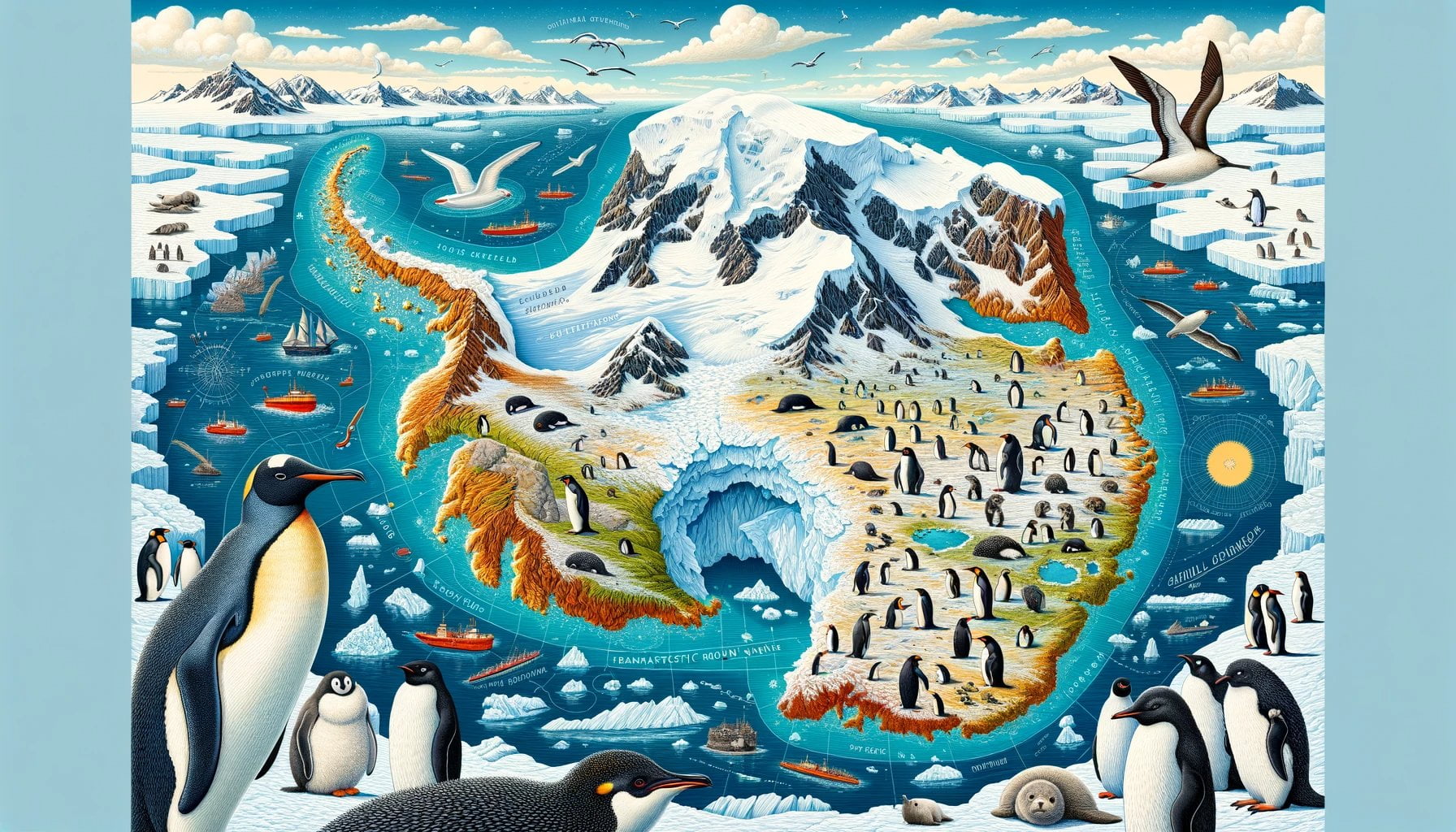
FAQ
Q1: What are some climate facts about Antarctica?
A1: Antarctica is the coldest, driest, and windiest continent on Earth. It is known for its extreme conditions, with some places experiencing winds up to 200 mph (320 km/h) and the lowest recorded temperature of -89.2°C. Antarctica is classified as a desert and receives only about 2 inches of snow each year. The snow in Antarctica is old and never melts.
Q2: What are some scientific facts about Antarctica?
A2: Antarctica is the fifth largest continent in terms of total area. It has no native human population and no countries. Prior to the Antarctic Treaty of 1959, seven countries made defined claims to Antarctic territory. The Dry Valleys in Antarctica are the driest place on Earth, with low humidity and minimal snow or ice cover. The Antarctic ice sheet is the largest ice store on Earth, covering 14 million square kilometers (5.4 million square miles).
Q3: What are some geography facts about Antarctica?
A3: Antarctica is the southernmost continent and is often referred to as “The Frozen Continent.” It does not have a native human population. The continent used to have a different climate in the past, with forests and dinosaurs, but it became frozen due to plate tectonics and changing ocean currents.
Q4: What are some facts about penguins in Antarctica?
A4: Penguins are flightless seabirds that are at home on both land and sea. They have an open diet, breed in large colonies, and can swim and dive in the ocean. Most Antarctic penguin species “toboggan” down slippery icy slopes on their tummies, headfirst – much faster than waddling down. There are three main species of penguins in Antarctica: Adéle, Gentoo, and Chinstrap penguins.
Q5: What are some facts about animals in Antarctica?
A5: Antarctica is not only home to penguins but also a diverse range of wildlife. Adele penguins, despite their small size, can dive up to 600 feet underwater. Krill, small in size, play a vital role in Antarctica’s ecosystem as the main food source. Other animals such as whales, seals, orcas, and albatrosses also live in or visit Antarctica. The continent’s ice sheet is crucial for the survival of all life, and if it were to melt, the world’s oceans would rise significantly.
- Guatemala vs. Costa Rica: Plan Your Trip Smartly - April 16, 2025
- Master Types of Pumps: Ultimate Guide to Selection - April 16, 2025
- Unlock Types of Makeup Secrets: Master Any Look Now - April 16, 2025
